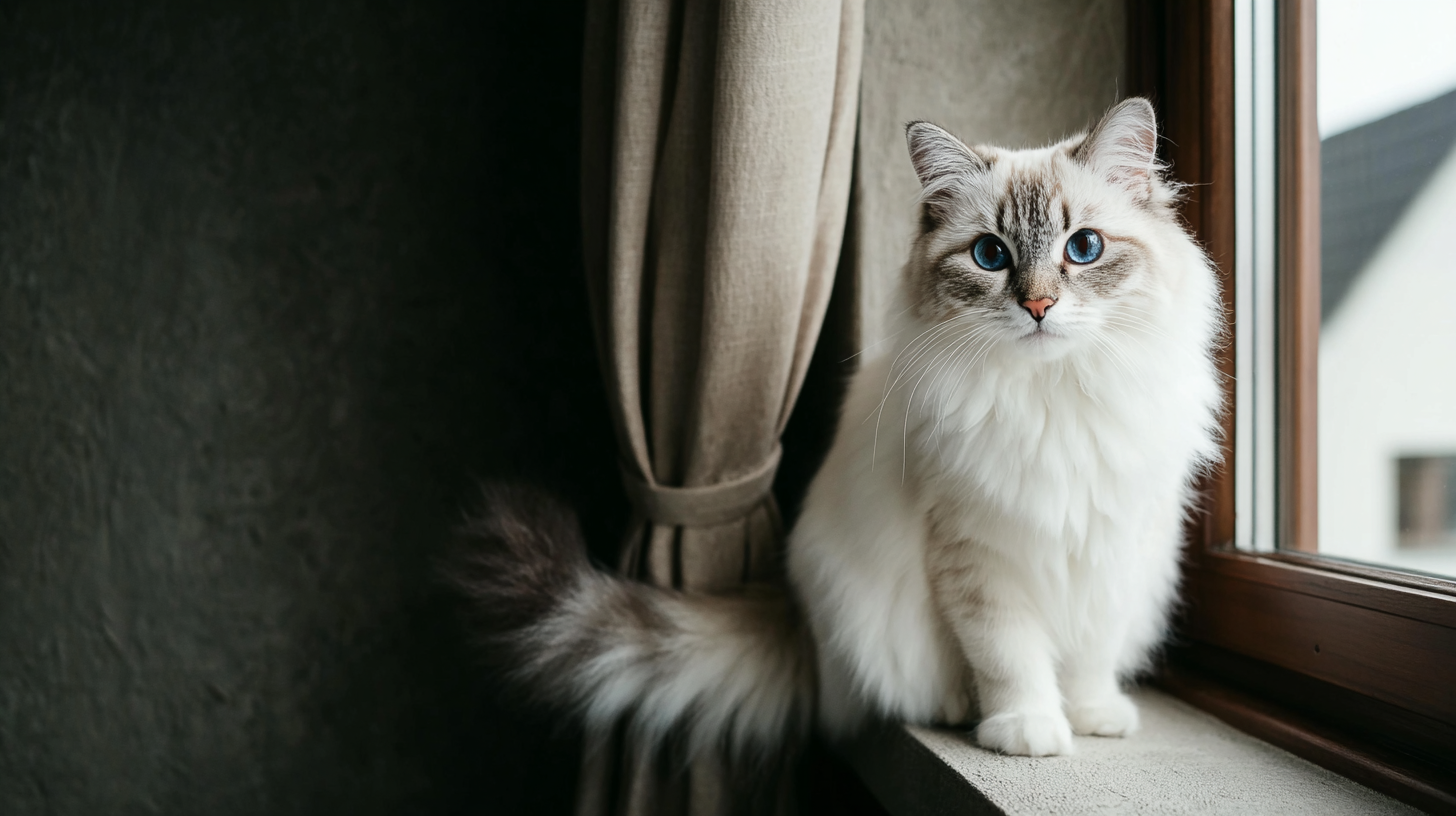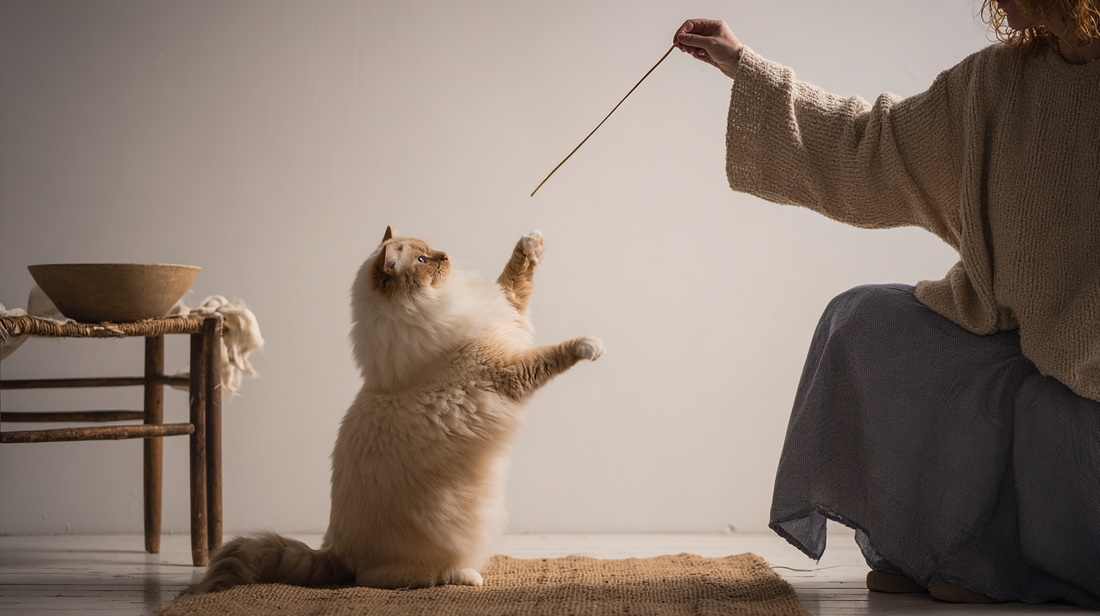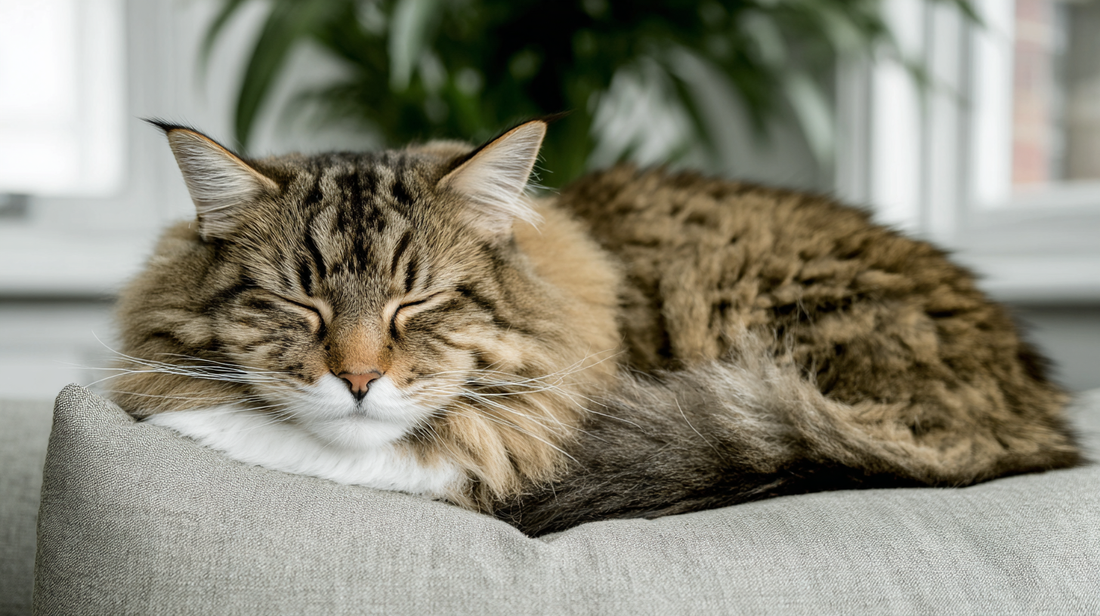As loving pet parents, your cats are cherished family members. You know their unique purrs, their favorite nap spots, and their playful antics. But what happens when that familiar purr sounds off, or their usual energy dwindles? Cats are masters of disguise, instinctively hiding illness until they're truly unwell. This natural behavior makes it challenging for you to detect problems like fever. Recognizing these subtle signs early becomes crucial for your cat's well-being and can significantly impact their recovery. As your veterinarian, I aim to empower you with the knowledge and practical tips you need to identify when your feline companion might have a fever, and when it's time to seek professional help.
Summary
What is pyrexia in cats?
You might think of a fever as a hot forehead, but in cats, it's a medical term called pyrexia, meaning their body temperature has elevated due to underlying disease or infection. Your cat's normal body temperature runs naturally higher than a human's, typically ranging from 100.5°F (38.0°C) to 102.5°F (39.2°C) when measured rectally. Keep in mind that intense activity can temporarily raise your cat's temperature, so you should avoid measuring within 30 minutes of energetic play. A fever isn't just a symptom; it's often your cat's body actively fighting off illness, representing a natural and important part of their recovery process.
How can I tell if my cat has a fever by watching their behavior?
Appetite and energy changes
A primary indicator you should watch for is loss of appetite or decreased food and water intake. This isn't just fussiness; when your cat refuses food, it can signal pain or serious illness requiring urgent veterinary attention. You should observe for lethargy, unusual tiredness, or reduction in typical activity levels. Are they playing less, or hiding more? These deviations from their normal social interactions can serve as red flags for you to notice.
Posture and breathing patterns
A feverish cat might curl up more to conserve warmth. You may notice changes in sleeping patterns or grooming habits in your pet. Stiffness or a hunched posture can also signal concern. Watch their breathing carefully. Panting or unusually fast breathing can indicate a sign of fever in your cat. However, these signs can also stem from stress, so you should consider the context.
Any changes in usual vocalizations—more meows, or unusual silence—can indicate distress in your cat. Cats communicate their emotional states through body language, including facial expressions, ear position, and whiskers. Flattened ears or dilated pupils might suggest fear or anxiety, which often mimic pain.
Knowing your cat's normal demeanor becomes critical, as even slight shifts can signal problems you need to address.

Physical signs to examine
While not always direct fever signs, these indicators point to underlying issues you should investigate:
Gum examination: your cat's healthy gums should appear pink. Pale or white gums can suggest shock, anemia, or blood loss, while yellow gums indicate jaundice. Red gums can result from fever or mouth bleeding.
Hydration assessment: gently pinch the skin on your cat's neck. If it returns slowly, your cat might be dehydrated . Dry, tacky gums also indicate dehydration in your pet. Dehydration commonly accompanies fever as your cat's body tries to regulate temperature and fight illness.
Taking your cat's temperature at home
Preparation and supplies needed
You'll need a digital rectal thermometer (ideally designed for pets), petroleum jelly or water-based lubricant, and a calm helper for gentle restraint. You should approach your cat calmly, from the side or behind, avoiding direct eye contact, which they can perceive as threatening. Use a calm voice and gentle stroking to help them relax. If your cat appears already agitated, it might be best for you to seek veterinary assistance instead, as forcing them can prove counterproductive and unsafe.
Safe measurement technique
With your helper providing gentle, secure restraint, lubricate the thermometer tip. Gently lift your cat's tail and slowly insert the thermometer about one inch into their rectum. Hold it steady until it beeps.
Your cat may not enjoy this process, and that's completely understandable. Your reassuring demeanor becomes key to success. If your cat resists strongly or becomes aggressive, you should stop immediately. Your safety and their emotional well-being are paramount.
Forcing a frightened cat can create lasting negative associations with handling and future vet visits.
When should you contact your veterinarian?
Knowing when to act becomes crucial for your cat's health. If your cat's temperature measures above 103.5°F (39.7°C), or if they exhibit persistent signs of illness such as continuous hiding, changes in social interactions, prolonged lethargy, increased vomiting frequency, or significant weight loss, it's time for you to contact your vet.
Even if their temperature isn't significantly elevated, but you observe a combination of these concerning signs, don't hesitate to reach out. You should trust your instincts as a pet parent; you know your cat best.

What happens during your veterinary appointment?
Initial assessment and history taking
Upon your arrival, the veterinary team will begin with a comprehensive assessment, often starting with "hands-off" observation of your cat's demeanor and movement to assess their overall health without creating immediate stress. They will gather a thorough patient history from you, asking about changes in behavior, eating habits, or specific concerns you've noticed.
Complete examination and testing options
The veterinarian will perform a full physical examination on your cat, checking vital signs like heart rate, pulse, and respiration. They will examine your cat's eyes, ears, mouth (including gums and teeth), and palpate their abdomen. This comprehensive examination helps identify any underlying conditions causing the fever or other symptoms in your pet.
To pinpoint the cause, your vet may recommend a "minimal database" of diagnostic tests for your cat. This typically includes a complete blood count (CBC) , a serum biochemistry panel (to assess organ function), and a urinalysis. For cats over five years old, a serum thyroxine level may also be checked.
In some cases, abdominal imaging (radiographs or ultrasound) might be suggested to visualize your cat's internal organs.

Treatment planning and communication
Your role as a vigilant pet parent
Understanding how to identify a fever and other subtle signs of illness in your cat represents a powerful way to ensure their long, healthy, and happy life. Remember that your cat's well-being is a shared responsibility between you and your veterinary team. You shouldn't underestimate the value of your keen observations of your pet's daily routine and subtle behavioral shifts—they are often the first, and most crucial, indicators of problems you can detect.
By staying attentive to these changes, knowing how to take a preliminary temperature reading, and understanding when to seek veterinary help, you play an indispensable role in safeguarding your cat's health. When in doubt, you should always reach out to your veterinarian. We are here to support you and your cherished feline companion every step of the way, ensuring they receive the best possible care.
The information in this article is based on the following scientific publications:
- Elliott, J., & Grauer, G. (Eds.). (2006-2007). BSAVA Manual of Canine and Feline Nephrology and Urology (2nd ed.). BSAVA Publications.
- Villiers, E., & Blackwood, L. (Eds.). (2005). BSAVA Manual of Canine and Feline Clinical Pathology (2nd ed.). BSAVA Publications, Gloucester
- Horwitz, D. F., & Mills, D. S. (Eds.). (2009). BSAVA Manual of Canine and Feline Behavioural Medicine (2nd ed.). BSAVA Publications, Gloucester
- Harvey, A., & Tasker, S. (Eds.). BSAVA Manual of Feline Practice: A Foundation Manual. BSAVA Publications
- Rendle, M., & Hinde-Megarity, J. (Eds.). (2022). BSAVA Manual of Practical Veterinary Welfare (1st ed.). BSAVA Publications.
Looking for a solution? Start here
Stylla Hydration for cats
Supports optimal hydration with amino acid-based formulation
- Encourages drinking with amino acid flavour enhancers
- Supports urinary health through increased water intake
- Promotes kidney function with specialised ingredients
Made in Switzerland with strict quality standards





